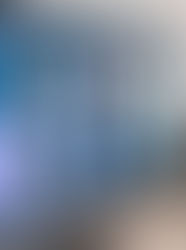The Rebirth of Alternative Online Culture in a Design-Driven World
- Ankit Garg

- 12 hours ago
- 4 min read

Over the last twenty years, the digital realm has undergone a massive transformation, but the need for genuine self-expression has remained. The internet back then had separate categories in which people could park their virtual selves with minimal restriction, without today's mainstream platforms enforcing strict visual and behavioral codes. One of the top representatives of this time period was the online community Vampirefreaks, which had gained the love of highly visible goth, emo, and industrial alternative subcultures and more. Though the internet has changed, the vitality of such communities has not perished but transformed—the design-driven new world is their new home.
It is impossible not to notice the reappearance of the alternative online culture today. Various factors have contributed to this revival, including nostalgia, sophisticated digital tools, and a rise in the rejection of the top social platforms' hyper-polished, algorithm-controlled environments. People are looking for places where their uniqueness is appreciated more than conformity, and where creativity is acknowledged and not forced into standard templates.
Nostalgia Reimagined Through Modern Design
The younger crowd has started to dig the aesthetics of the early 2000s dark themes, glitchy visuals, cyberpunk touches, and personalized pages. However, instead of just bringing back the old, they are changing it. The modern creators are using 3D motion, the visuals are interactive, layouts are immersive, and the typography is experimental to boldly reinterpret alternative aesthetics in innovative ways.
All the above-mentioned factors together form a strong visual language that can be seen as a powerful fusion of nostalgia and innovation. The messy, raw chaos that was the hallmark of early alternative communities is now becoming one with the accuracy and sophistication of contemporary design tools. It creates a digital aesthetic that appears to be at once very much familiar and completely new—an advancement of the expressive liberty that once turned sites like VampireFreaks into legends.
A Rebellion Against Digital Uniformity
The rise of social media platforms has also seen a corresponding rise in their demand for uniformity. The appearance of every profile is essentially the same. Each post has to adhere to certain formats. Algorithms that prioritize engagement over creativity dictate the shape of every interaction.
This process of making everything the same has resulted in a cultural revolt.
People want to go to places where design is affordable, expressive, and unconfined. The rise of alternative online culture can be partly attributed to dissatisfaction with mainstream platforms. By creating personal websites, participating in specialized forums, or meeting in smaller community areas, people are getting back their digital identity.
At these locations, design turns to be a statement of individuality and resistance rather than just a way to beautify the space.
The New Digital Underground
The contemporary resurgence of alternative culture has also revived the concept of the "digital underground." These are online places where one can get away from the whole social media noise, and those who inhabit these places can understand their identities without the risk of public judgment imposed on them.
These underground communities acknowledge and celebrate niche aesthetics such as darkwave, industrial fashion, emo revival, gothic art, and experimental design. They are the ones who cherish depth more than popularity and connection, rather than performance. Instead of viral content, they engage in genuine dialogue, sharing niche interests, and showcasing expressiveness through visuals.
This turn signifies a major change in the cultural landscape: the desire to belong without being under the surveillance of the observer, the curator, or the rater.
Design as a Form of Identity and Connection
Nowadays, design is no longer just an expression of art; rather, it is a means of communication. The colors, typefaces, textures, and general visuals that people pick for their online presence reveal their character, feelings, and where they feel they belong.
This is the case especially for the alternative subcultures.
The use of dark gradients, neon accents, distorted visuals, atmospheric photography, and glitch effects has long ceased to be just an expression of style—they are pronouncements of identity. Nowadays, even the most casual users can create intricate visual representations of who they are, thanks to easy-to-use design tools. Such accessibility has allowed the alternative aesthetics to reach new audiences that were not initially associated with them.
Community: The Heart of the Revival
Besides design being the cultural comeback’s driving force, it is the community that makes it sustainable. Daily, artists, musicians, writers, fashion creators, and digital designers get inspiration from one another. They publicize their artworks, remix one another's concepts, and cooperate notwithstanding geographical barriers.
This feeling of communal creativity is indicative of the early internet era, when communities existed based on passions rather than by popularity metrics. The revival of alternative online culture has shown that people are not just after visually appealing spaces but also seeking connections with some profundity that are based on common identity and artistic liberation.
Conclusion
The resurrection of alternative online culture in the design-oriented world of today is not just a nostalgic trend; indeed, it is a cultural response with great significance to the restrictions of the present-day digital spaces. If the early internet subcultures with their raw emotion are to be combined with the elegance of modern design, then the new digital era will be one characterized by authenticity, creativity, and individuality.
This movement is a clear indication of the fact that the alternative culture is not disappearing, but rather transforming its shape. Therefore, as long as the public is in search of the freedom to express themselves, community, and identity, the digital underground areas will remain pivotal in the creative process of the current web.





























Comments